Your daily dose of Product Management Goodness
Want to know more?
We would love to hear your questions and suggestions for topics you would like to see covered in our future blog posts, so don't be shy and get in touch!

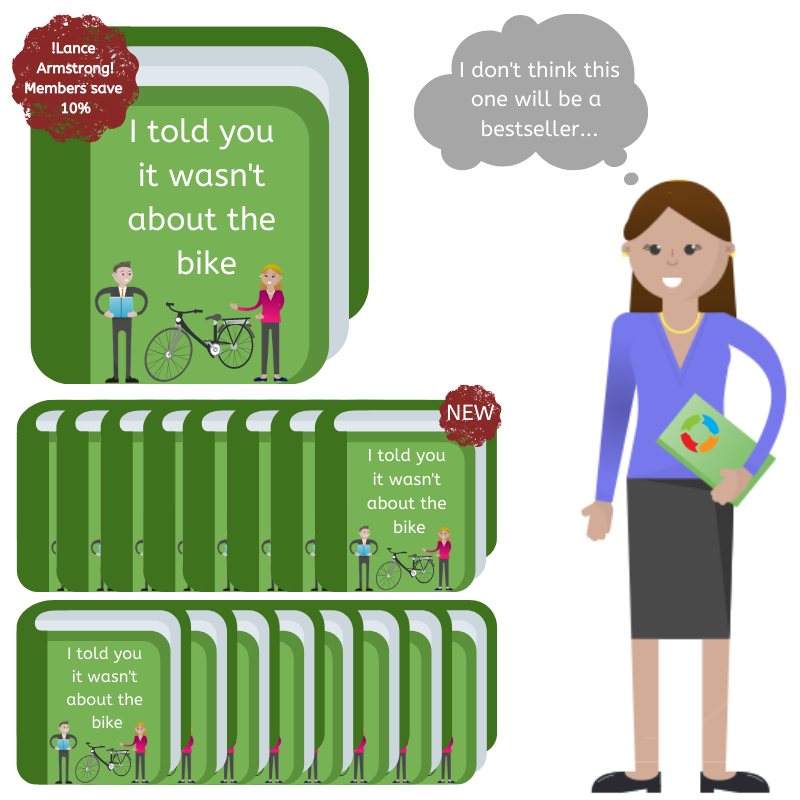
‘It’s not about the bike
Lance Armstrong once wrote a book entitled ‘it’s not about the bike’. Turned out there was more truth in that title than we’d imagined, but ‘It’s not about the product’ would be a good product management book title.
Working with a new team recently on a go to market plan and they were surprised how much of product management is not about the product. It’s so true. Think about a launch plan - it shines a light on this and shows that to launch well you must have a product, but you also need legals, messaging, sales plans, support, pricing, etc. Great products need lots of rounding out to be world class propositions.
read more

Footsteps
We’re a few weeks into the new year – just long enough for those ambitious plans we had for our product in the new year to start unravelling as the daily grind takes hold. How can Product Managers remain on track when we’re overwhelmed with work? The trick is to divide and conquer – complex, difficult, or overwhelming tasks are made up of many simple and easy steps. So don’t dwell on that huge product launch today to the point it overwhelms, tackle some simple steps that move you a little closer. Concentrate on the next footstep, not the mountain.
read more
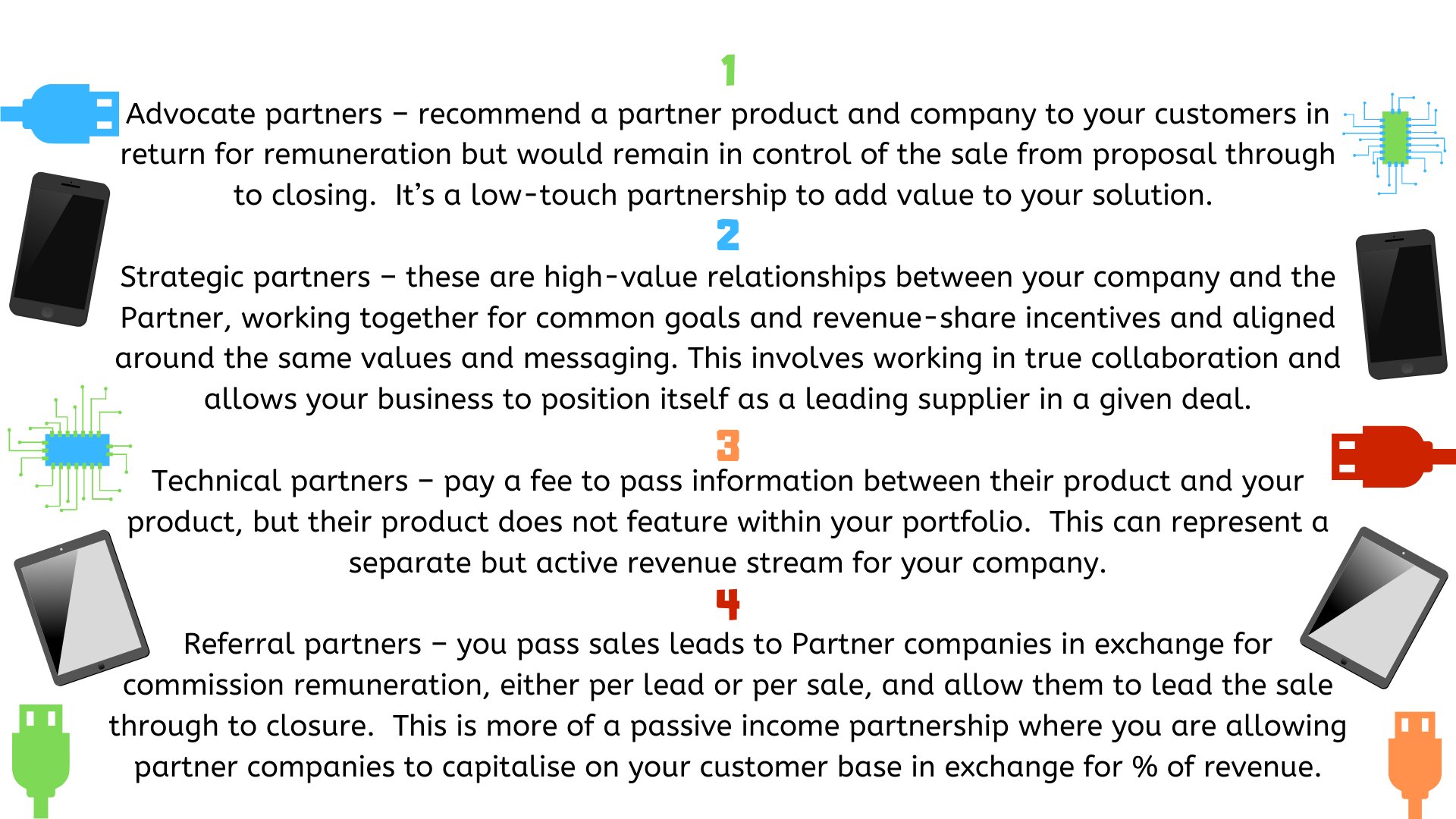
Importance of Product Partners
For many software companies there is a real challenge in continuing to develop software in keeping pace with changes in the sector. To be successful, you need a business strategy that makes sure you meet the needs of customers in your target market . . . and it’s here where Product Partners play a crucial role.
Product Partners are different to straightforward channel re sellers who include your software in a portfolio of other solutions to sell to their target market. Instead, Product Partners have created software of their own which adds value to your existing solution. They can help you to offer a functionally-rich solution, create better revenue opportunities, position your company as the strongest supplier, and create new active and passive income streams.
There are four main different types of software Product Partner, all of which need to be carefully managed to make the business successful:
Whichever Product Partner strategy you go for (and it can easily be a combination of all four) it’s important to keep the main goal of any partnership in mind; both sides must get value from the relationship.
read more

6 of 6
This week I’m going to step through how you can build a feature driven roadmap from a high level vision. I’ll do this through the example of Uber. We’re now on step 6:
1. Define your Elevator Epic.
2. Identify the stakeholders involved in your epic.
3. Prioritise your stakeholders
4. Define the factors that drive their behaviours
5. Define the goals that support each factor.
6. Describe the need that results from the goal
Finally, we identify the needs behind each goal. Our Uber business user might want autogenerated receipts to make expense submission easier.
So over this series of blogs we’ve shown a nice and simple method to go from vision to feature!
read more
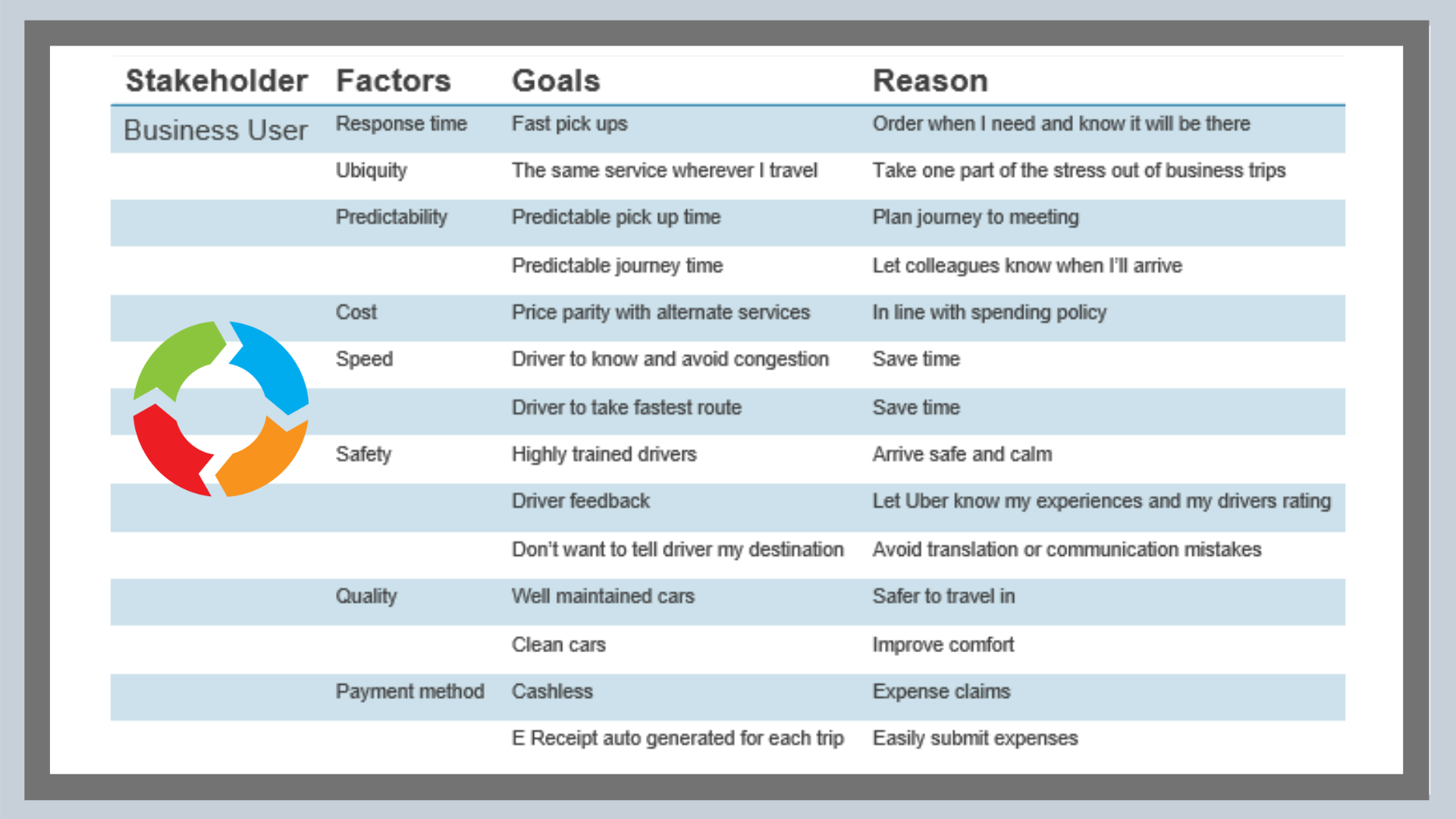
5 of 6
This week I’m going to step through how you can build a feature driven roadmap from a high level vision. I’ll do this through the example of Uber. We’re now on step 5:
1. Define your Elevator Epic.
2. Identify the stakeholders involved in your epic.
3. Prioritise your stakeholders
4. Define the factors that drive their behaviours
5. Define the goals that support each factor.
6. Describe the need that results from the goal
For each factor we think through the goals – What our customer is trying to achieve with that aspect of our service. For example, a business user of Uber might have a goal of an E receipt being auto generated for each trip.
read more
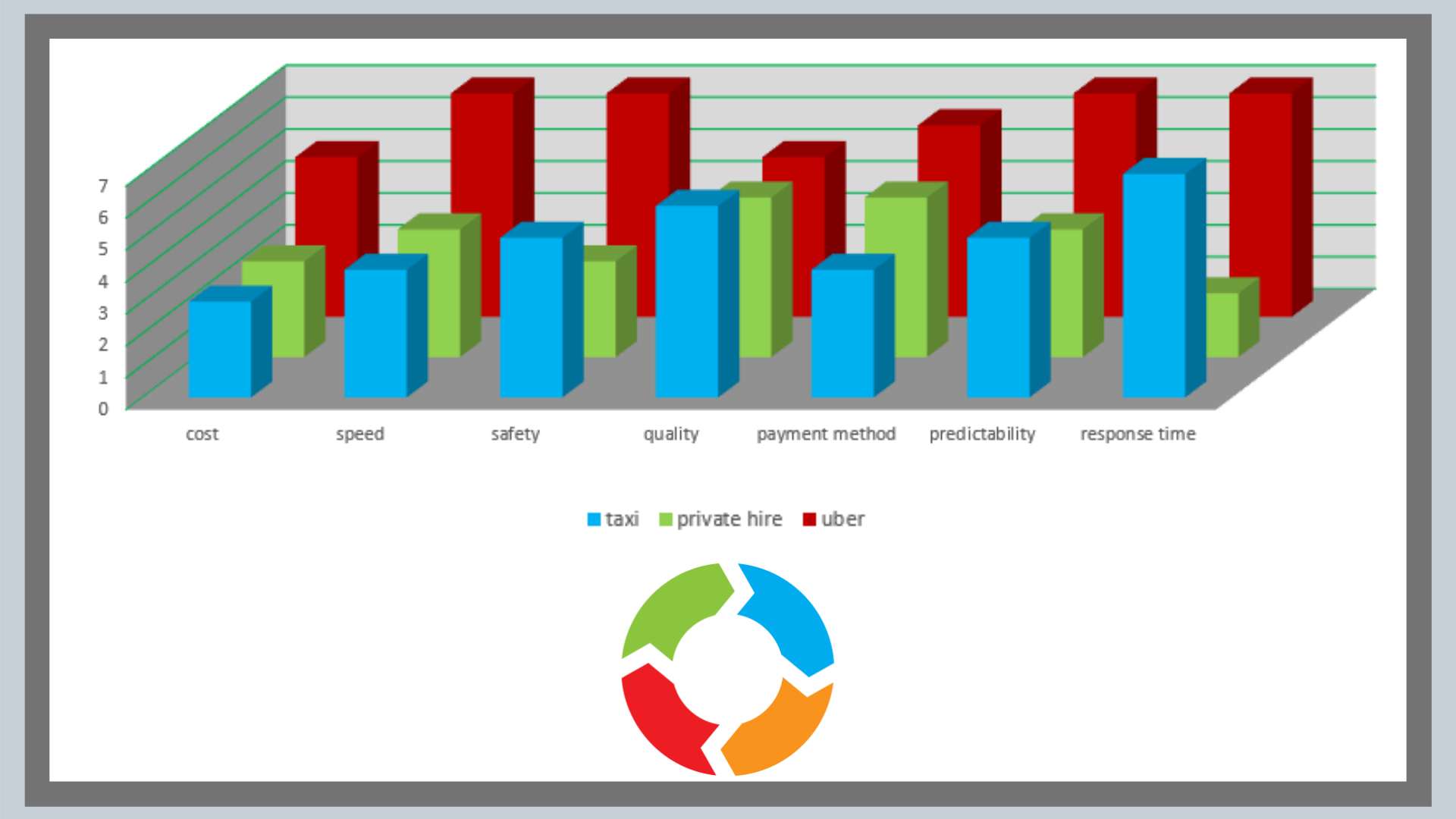
4 of 6
This week I’m going to step through how you can build a feature driven roadmap from a high level vision. I’ll do this through the example of Uber. We’re now on step 4:
1. Define your Elevator Epic.
2. Identify the stakeholders involved in your epic.
3. Prioritise your stakeholders
4. Define the factors that drive their behaviours
5. Define the goals that support each factor.
6. Describe the need that results from the goal
Next we define factors that drive their behaviour. For each stakeholder group there will be reasons that make them more or less likely to use your service – and typically more than one reason. For example, if we think of Uber riders, price might be important, but it won’t be the only reason they use the service. Think of things like safety, response time, ease of use, etc. So we build a prioritised factors graph that describes the most significant factors that our customers value and compares our ability to execute each factor versus our direct rivals.
read more
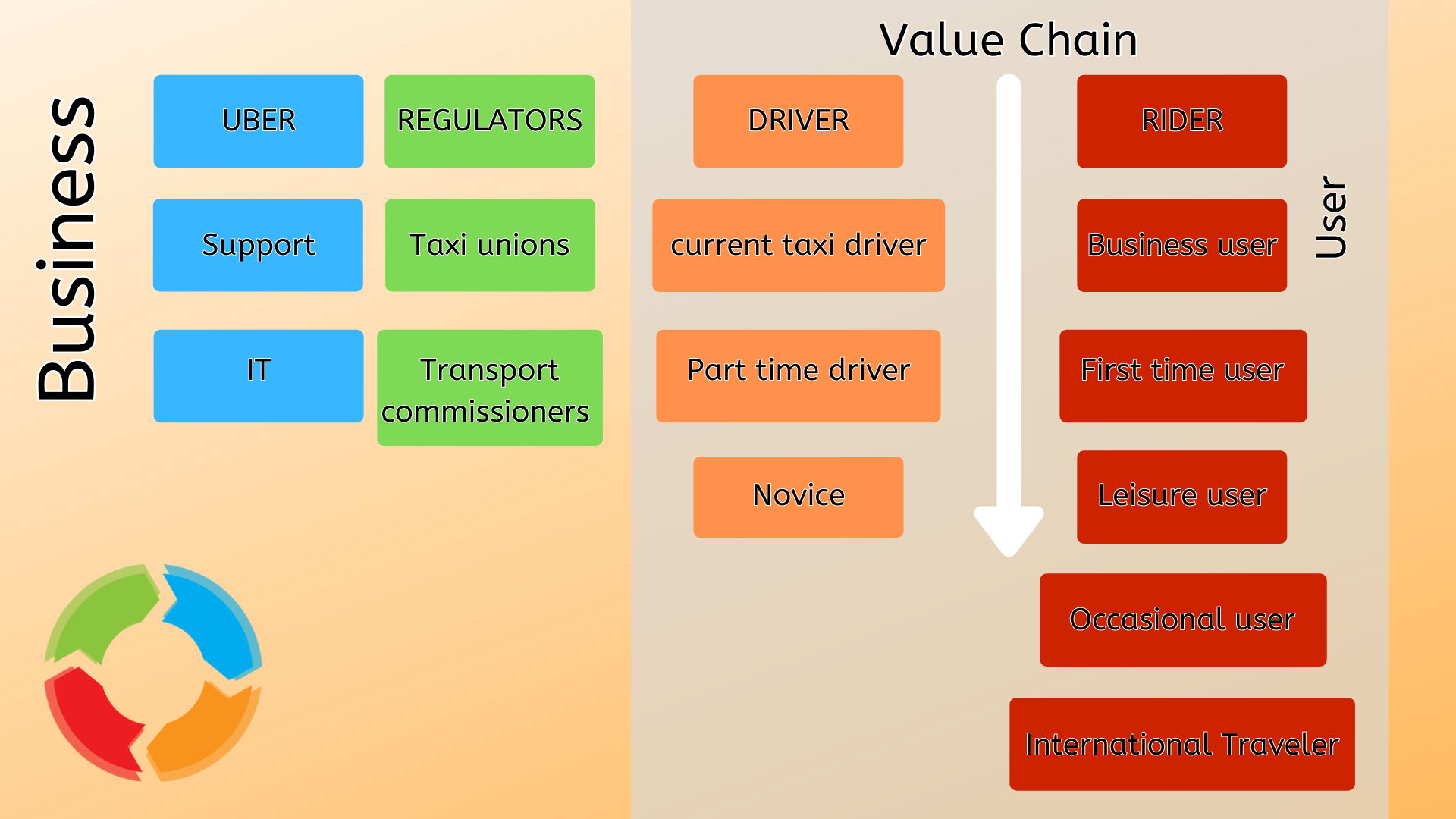
2,3 of 6
his week I’m going to step through how you can build a feature driven roadmap from a high level vision. I’ll do this through the example of Uber. We’re now on step 2 & 3:
1. Define your Elevator Epic.
2. Identify the stakeholders involved in your epic.
3. Prioritise your stakeholders
4. Define the factors that drive their behaviours
5. Define the goals that support each factor.
6. Describe the need that results from the goal
Once we’ve define our Elevator epic using the Value proposition framework, we think about who is involved – the stakeholders. This is more than just users, it’s everyone across the value chain. From our Uber example we know that those involved include riders, drivers and regulators. There are also internal stakeholders. Additionally, stakeholder groups tend to be of more than one type. For example, riders might be business users, leisure travellers, etc. Once identified, we prioritise the customer-side personas so we know which needs to focus on.
read more
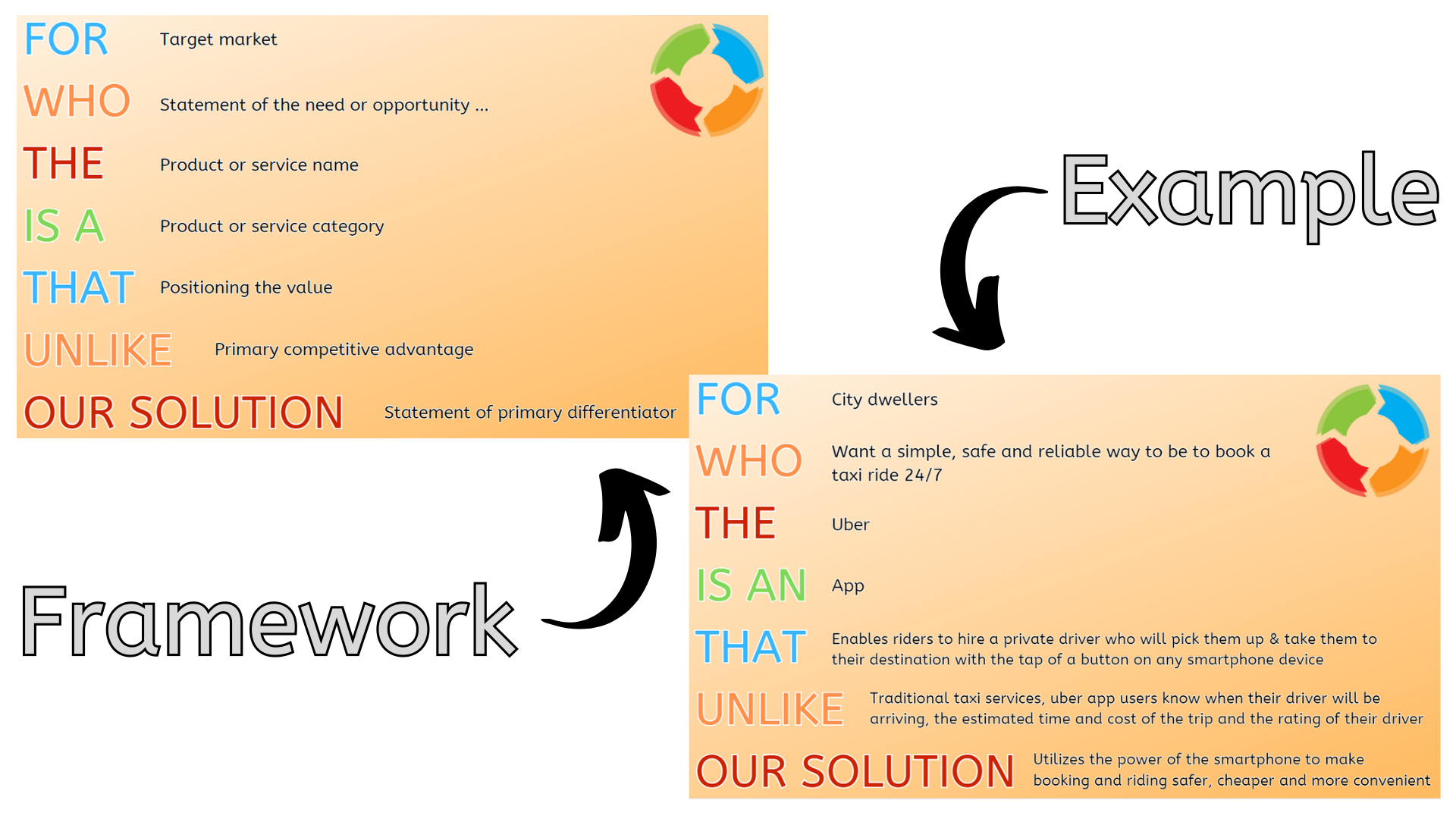
1 of 6
This week I’m going to step through how you can build a feature driven roadmap from a high level vision. I’ll do this through the example of Uber. There are six steps to cover:
1. Define your Elevator Epic.
2. Identify the stakeholders involved in your epic.
3. Prioritise your stakeholders
4. Define the factors that drive their behaviours
5. Define the goals that support each factor.
6. Describe the need that results from the goal
The first step is pretty simple for a Product Management team. We define our Elevator epic using the Value proposition framework. It should capture core value that you deliver. The framework we use is:
For
Who < Statement of the need or opportunity …>
The < Product or service name >
Is a < Product or service category>
That < Positioning the value >
Unlike < Primary competitive advantage >
Our solution < Statement of primary differentiator >
read more
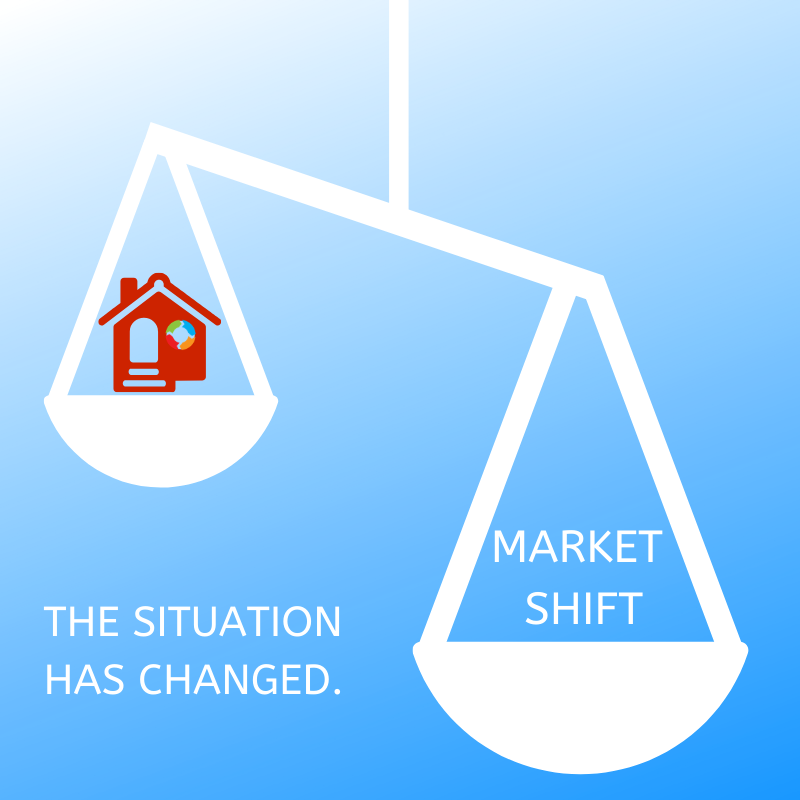
Market Shift
Does your Market Disappear or Shift?
The ‘decline of the high-street’ has been regular news for the what seems like forever. Few weeks go by without another casualty hitting the headlines. Talking with a group who are dealing with this got me thinking - is it market decline or market shift?
Take Blockbuster for example, they filed for bankruptcy, blaming a declining market. In reality, their market was larger than ever, it had just shifted towards the online & digital space.
So, what can we learn from this? Sure, some markets disappear, but most shift. And these shifts cause disruption that product managers can either embrace and take advantage of or ignore and find their products and services irrelevant.
Don’t get left behind by your market because of stubbornness or short-sighted, tactical thinking.
read more
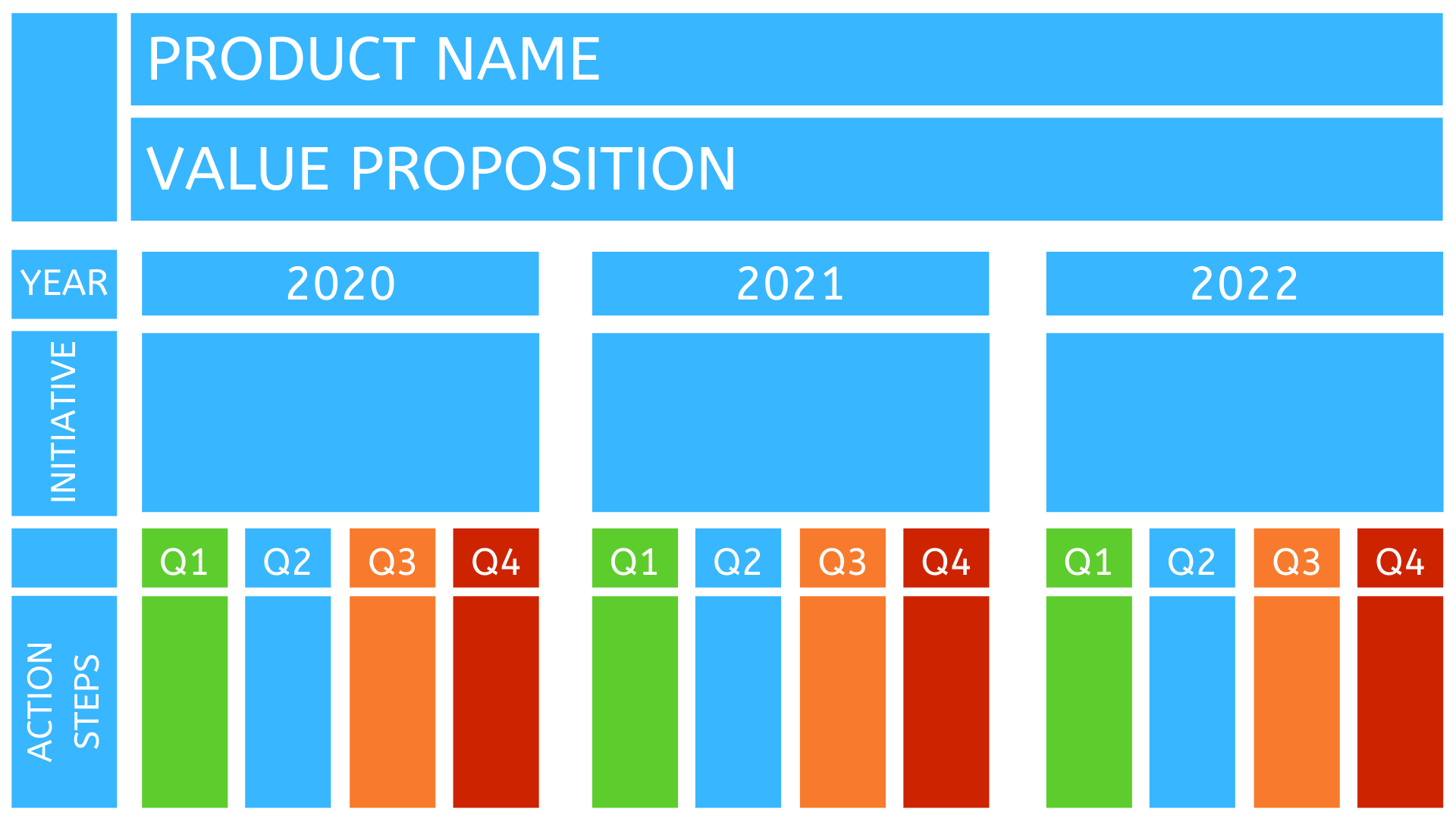
Product Timeline
Building out a vision is tough. Working out how to deliver is even tougher! We’ve built a one page canvas that helps:-
1. Define your three year goals for your product
2. Think of annual initiatives or themes for years 1, 2 and 3 that drive to that goal
3. Break the annual initiative down into quarterly points of value
It breaks a big problem down into smaller, bite sized steps.
How are you currently dealing with planning your product's future?
read more
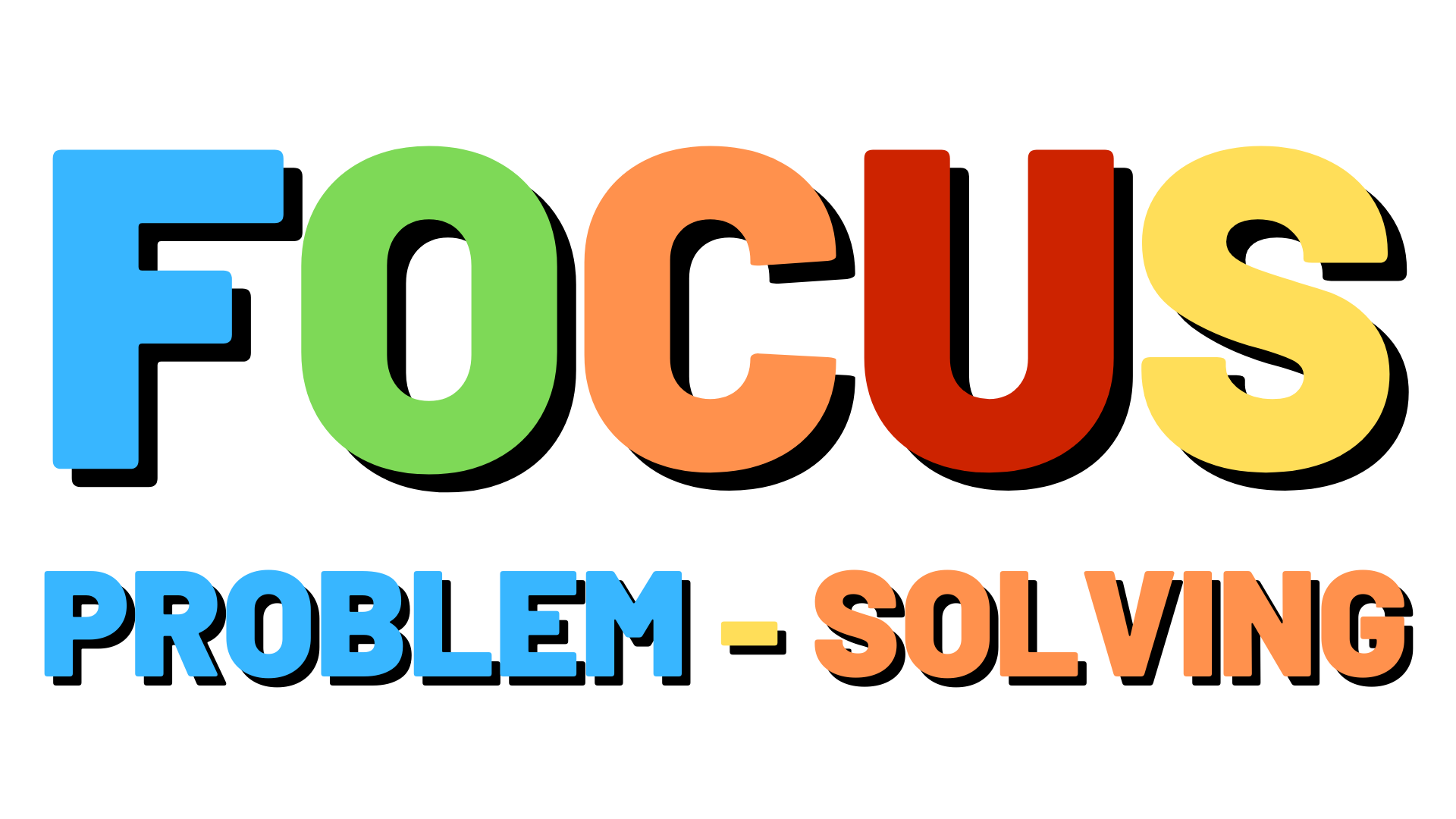
Product, Problem, Solution?
Product, Problem or Solution managers?
I was in conversation with some sales people recently and we got on to one of the regular hot topics - product managers talk too much about product. It can sound a little weird - surely a product manager should talk about the product? But too much product focus is wrong because customers don’t really buy products. Think of it like this; the old saying in sales that ‘people buy from people’ has a product management equivalent. “People don’t buy products they buy solutions to problems”. Help sales team sell by ensuring they have clarity on the issues that are front of mind for your customers rather than a dry list of features. Develop a problem and solution focus.
read more
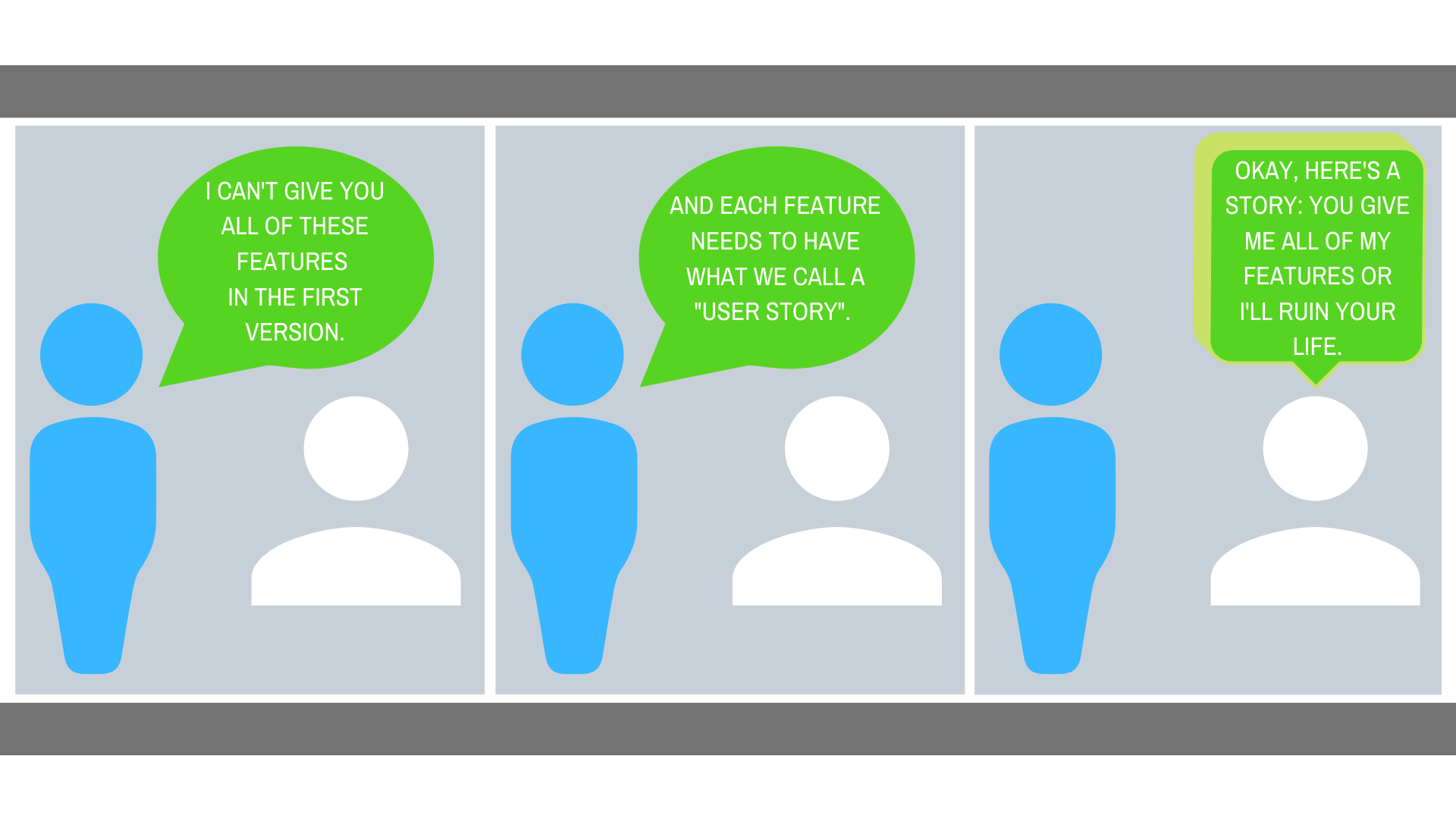
How often is too often?
How often is too often to release a product?
Recently working with a team, we got to a common agile conundrum; core to the agile process is the concept of frequent, iterative product releases. This is often seen as nothing but positive by many teams “You can release product updates every 7 days!”, but there are many markets where this makes no sense at all. For instance, your customer is a bank and your product has security implications – the iterative agile model simply can’t operate in that world. So is agile the wrong process for these types of products? Not necessarily. The agile process delivers regular product updates, but the product management team can choose what to do with those updates release to customer or hold back and bundle into a bigger product release that works for the customers business.
read more

characteristics
What are the characteristics of a good product manager?
It’s a question we face when we’re helping businesses build a product management function. If you’re recruiting experienced Product Managers then you might look for skills – launch skills, research skills, pricing skills, etc. But what about that person sat in support who is looking for a new challenge? They might not have the skills just yet, but do the have the core capability? Here’s our quick checklist for working out if they have pm potential
Curiosity – Do they demonstrate intellectual interest? Are they eager to learn?
Drive – Do they show ambition?
Discipline – Are the organised?
People skills – Can they get people to listen to them. Can they take people with them? Are they charismatic?
Communication – Can they get their point across clearly and quickly?
Thought leadership – Do they have vision? Are they a creative problem solver?
read more
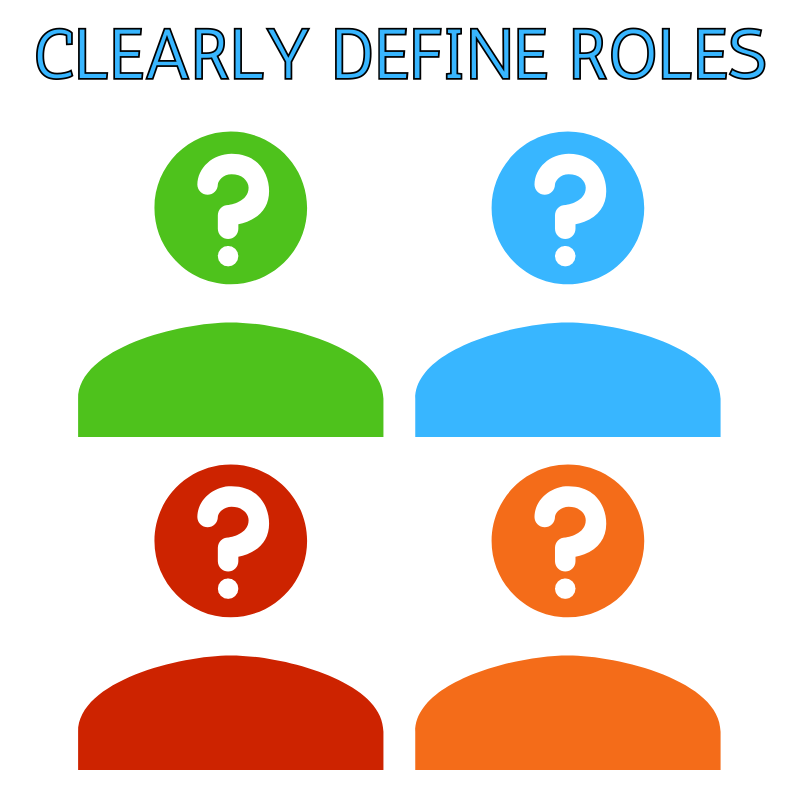
Prod Mgnt in tech organisations?
Where does Product Management belong in Tech organisations?
As Tech companies grow and the nature of technology evolves into the world of SaaS and apps, there’s often confusion around where Product Management should sit in the organisation.
Traditional consumer organisations have a tendency to consider Product Management in the same arena as Marketing or Development. The problem here is that the Product Managers can get tied up in functionality or market communications. This means no-one is engaging with customers to understand their problems or looking ahead and strategising as to what the business needs to do in the future to continue to be successful.
To drive the maximum success from a Product Management team, you need to understand exactly what their role is. It’s broadly comprised of three main focuses:
Product strategy
Product marketing
Technical product management
Within the Tech market, or any market for that matter, the truth is: if you want better products in the future, and for the product management team to be held accountable at organisational level, then it must be represented at Board level in its own right.
read more
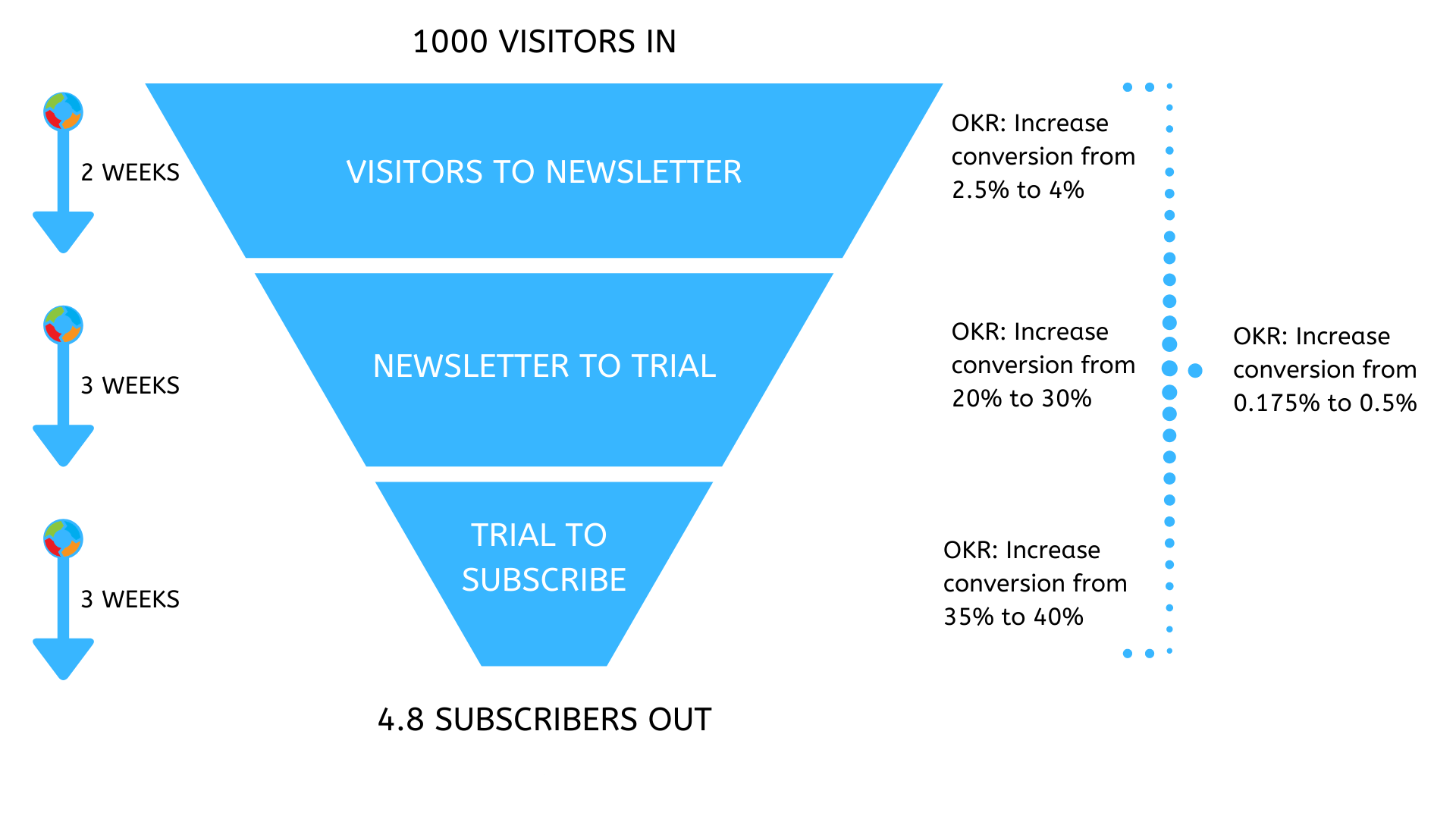
How do you track product success
???
Product Managers need to be able describe if the product they launched was successful, typically in metric form. Simple idea, but difficult to do. Whether you’re an OKR or KPI or SMART fan, it’s important to think in terms of lag and lead. Some metrics lag – think revenue. It’s critical, but if that’s all you quantity then there’s very little action you can take at the point that the metric becomes measurable. Other metrics lead – think pilot customer or launch date. These give an indication that you’re on the right path. Product Managers should think of a funnel of metrics that describe not just what success looks like, but that journey to success.
read more

Existing customers
So many organisations look at their existing customers as ‘A deal that is already done’.
Why is it that they so rarely ask how are these happy customers going to help them sell to the next group of customers?
When launching a new product, having a group of strong advocates will kick start those sales far quicker than sending out flyers or other marketing materials.
Think about what you need to do with getting the innovators on board and talking about your solution.
Don’t take your customers for granted. They could be your greatest advocate or your biggest critic. And they can either damage or improve your solution growth, depending on how you treat them.
read more
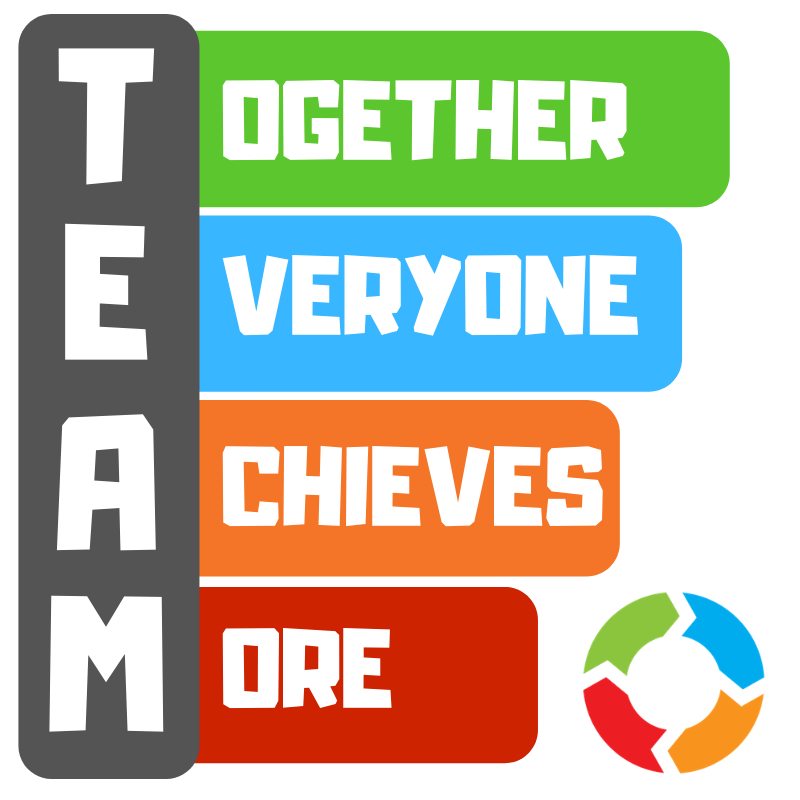
Who is responsible?
Who is responsible for successfully launching a product?
Ever tried to build a RACI model that describes roles and responsibilities through a product delivery cycle? It often ends up as an overcomplex spreadsheet that feels more academic than real-world as we try and map out the complex world we live in. What the exercise misses is this; taking a product to market is a team sport - a group of people with expertise across the product delivery process are engaged in bringing a product to market from inception, to launch, to in-life management. They bring their expertise to the table and might take the lead on certain topics. But they work as a team to get the best product delivered. My tip; whenever you’re trying to deliver a product to market, agree some team objectives and key results, and never lose sight that you’re on the same team!
read more

Product Planning 2020
Three step product planning for 2020
For many of us it’s the first day back in the office and a time crystallise our plans for 2020. It can feel a little daunting, so here is our three-point checklist of things to do to get 2020 moving! Click on the links to download the templates for each step
1. Know your product goals for 2020.
Link the strategy of the business to a set of concrete objectives for your product using the market map tool. Read about it here
https://lnkd.in/ePhQ8jR
2. Make sure you have the people and skills.
Think about the skills you’ll need in your team to execute on the objectives you’ve set out in step 1. We’ve built a tool called “mind the gap” that you can download here
https://lnkd.in/enX_KZa
3. Articulate your plan and show the delivery of value
Being able to share your 2020 plan in a simple and coherent way is critical for buy-in. Take a look at our one-page vision template here.
https://lnkd.in/eGX55F4
read more
Check out the Archive